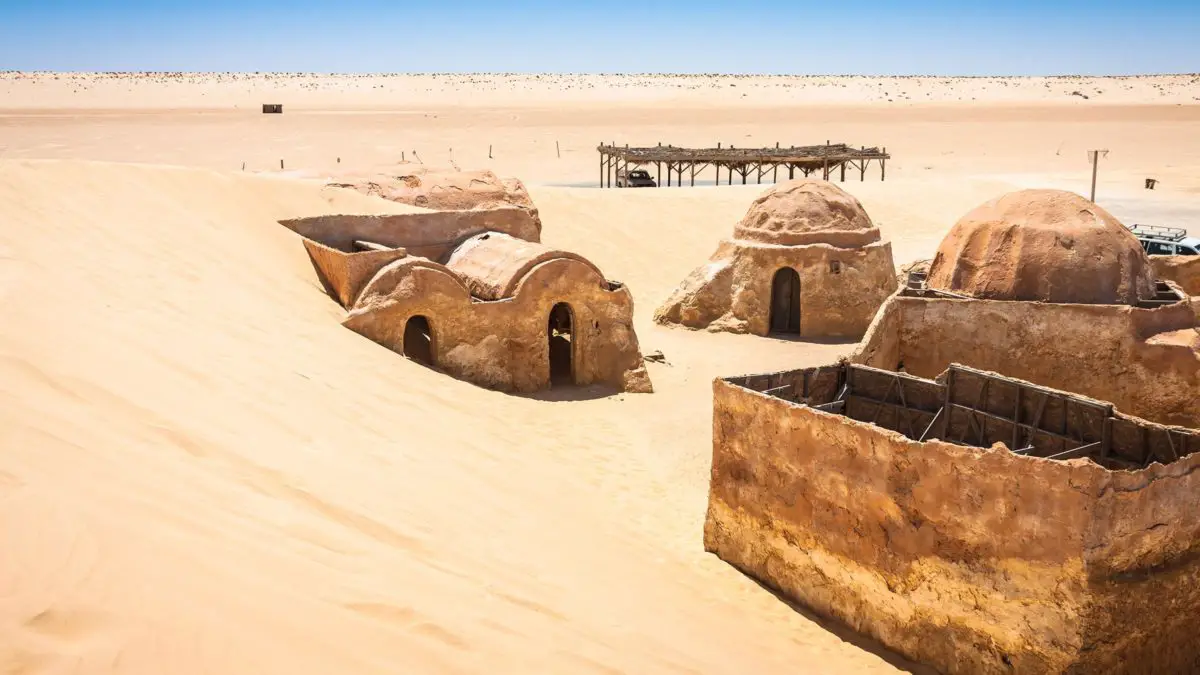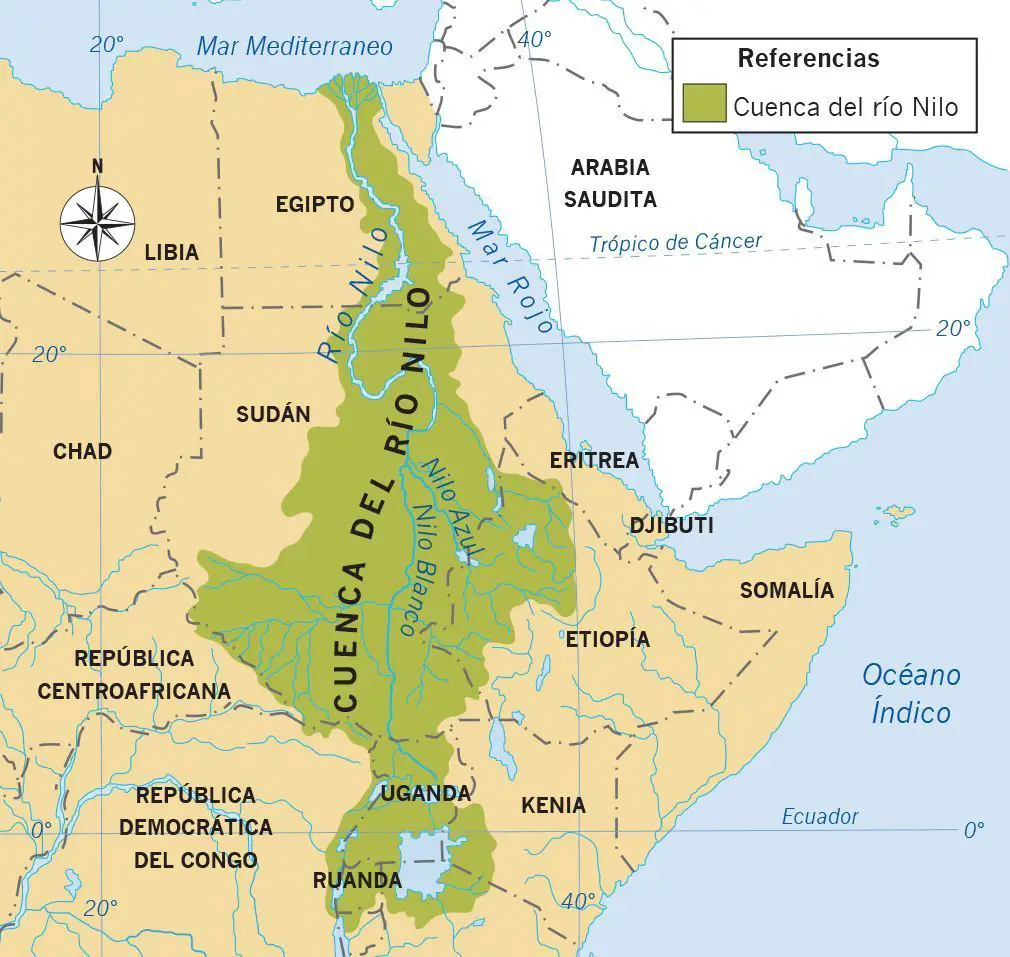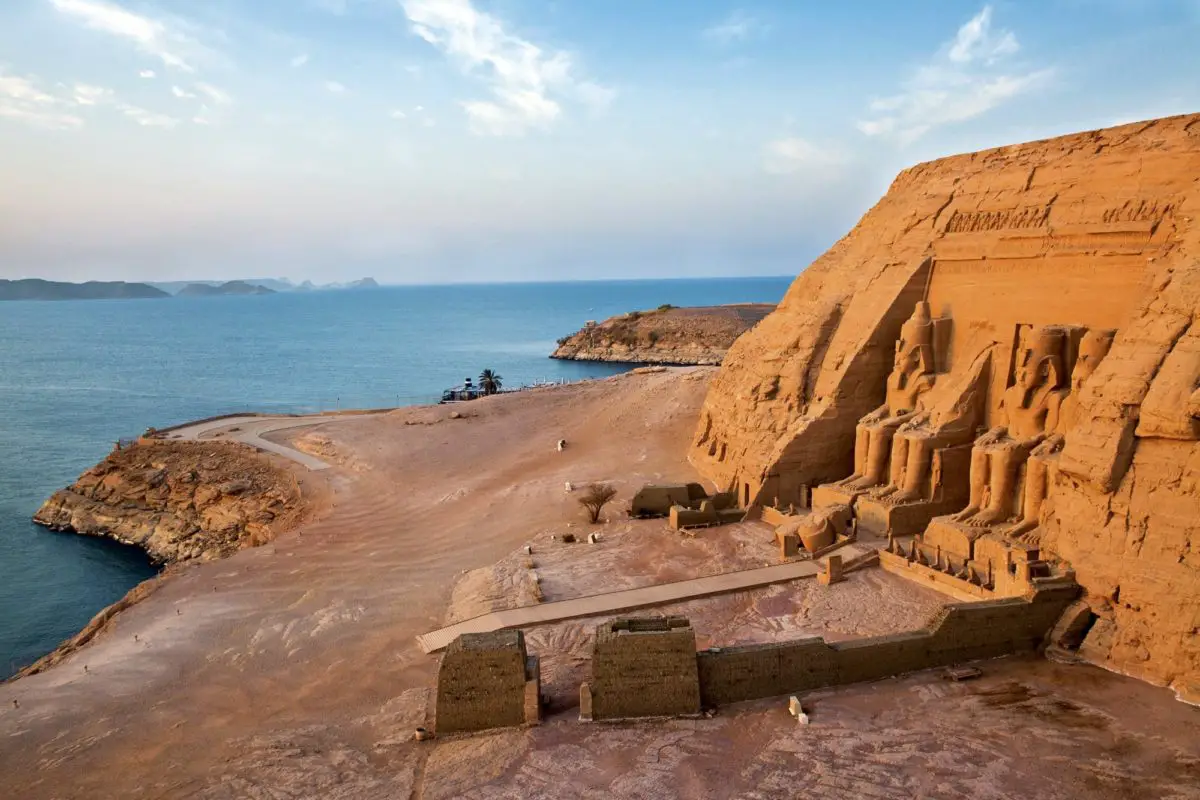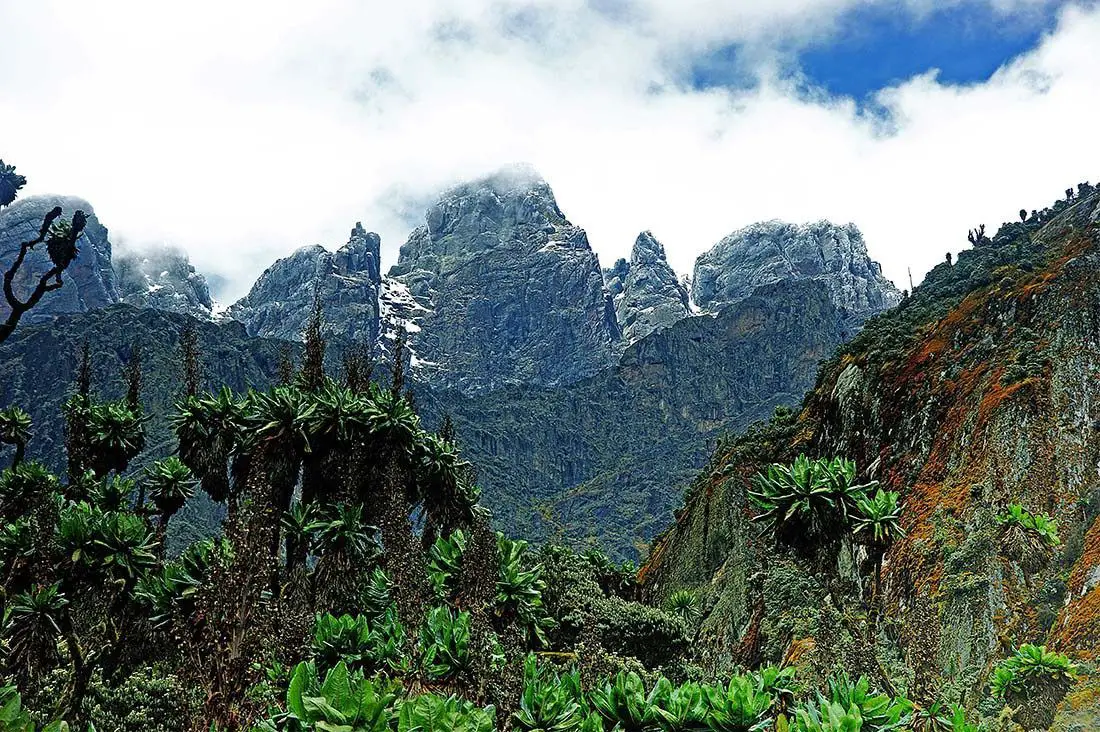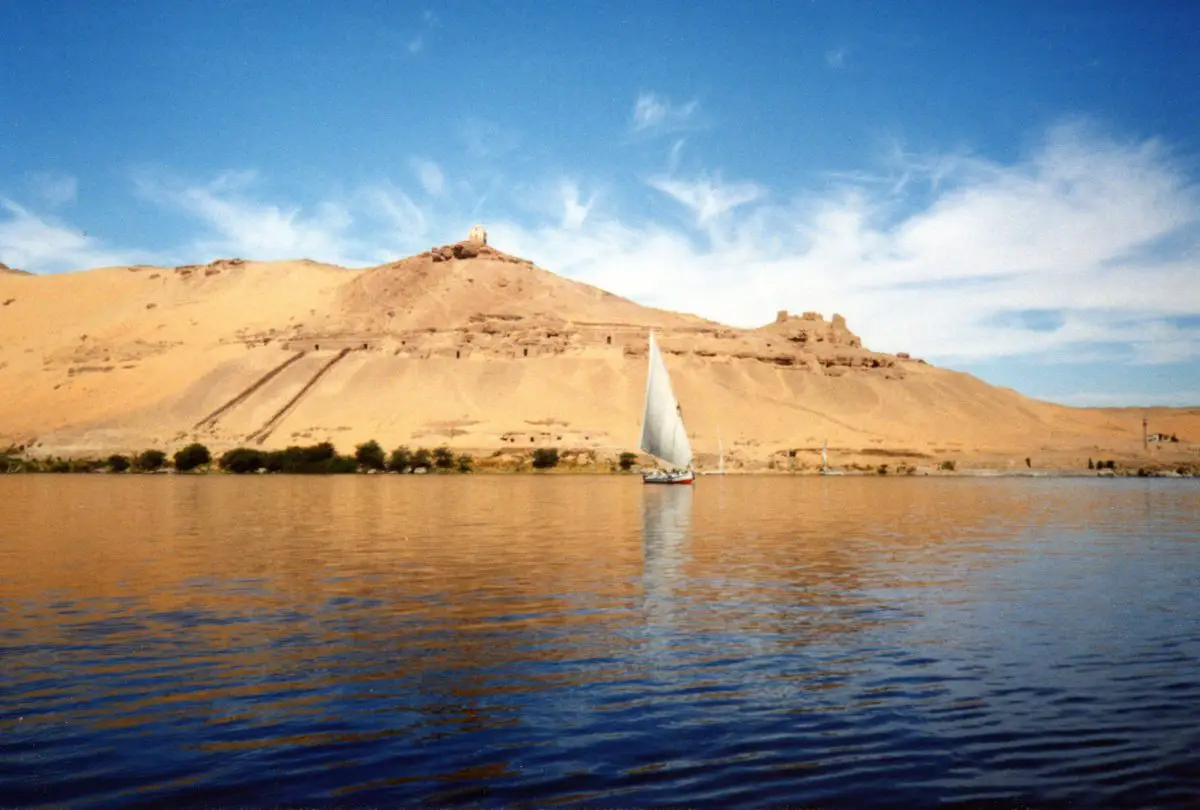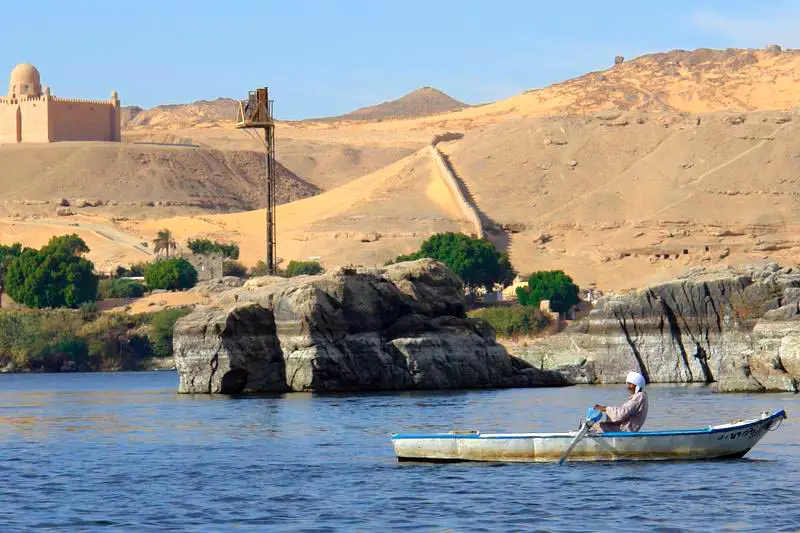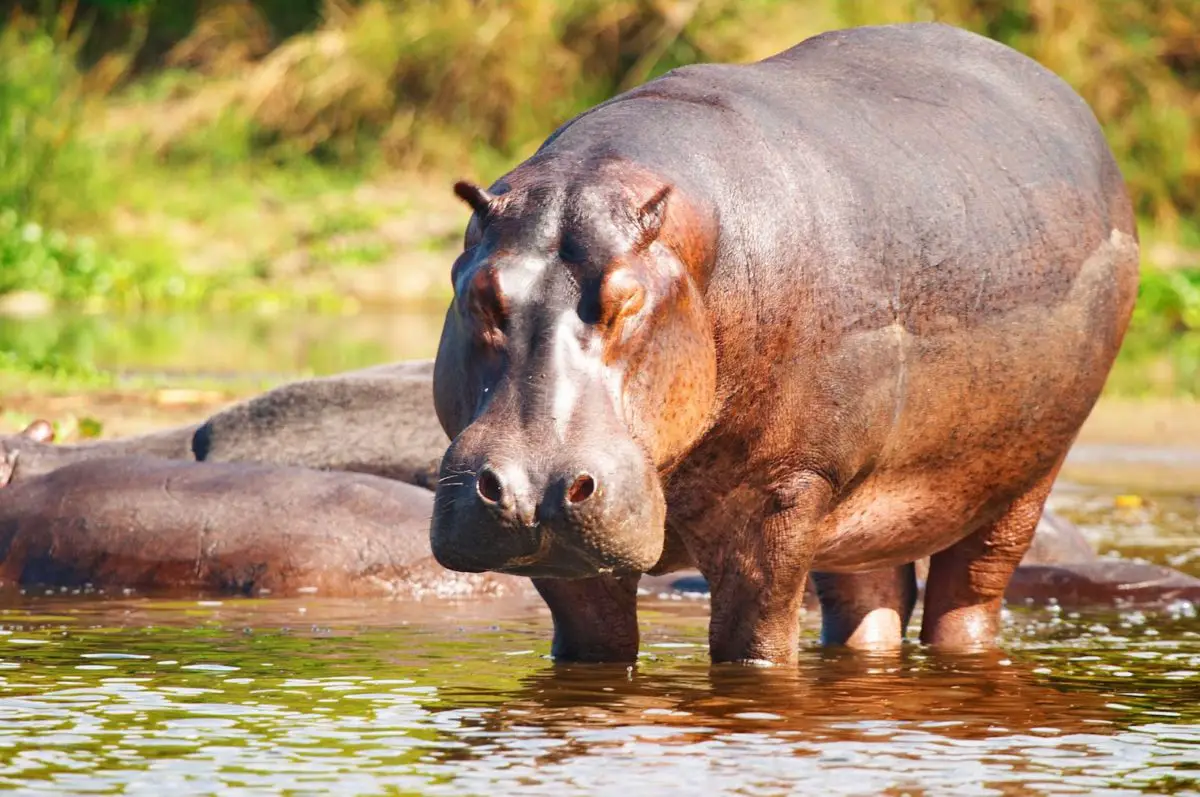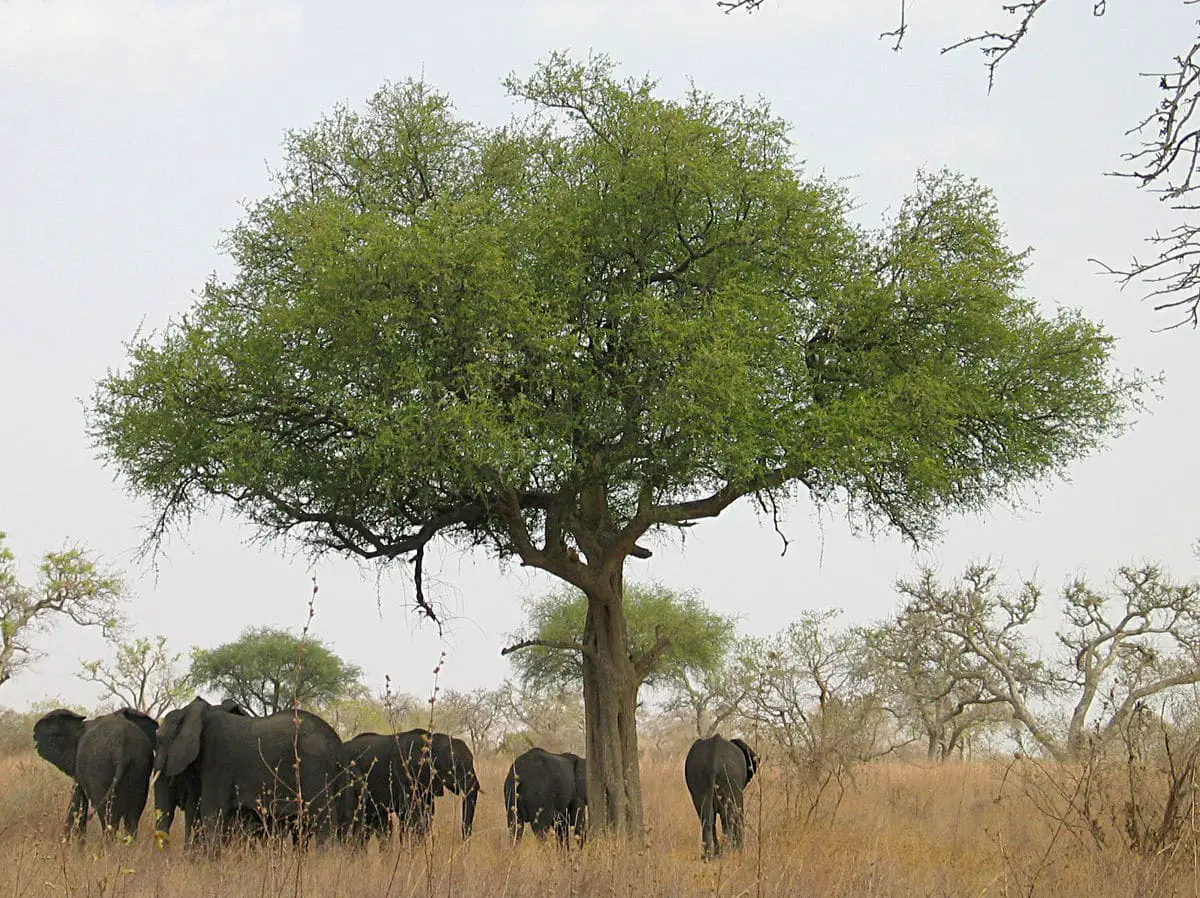Last Updated on May 27, 2020 by Hernan Gimenez
Indice De Contenido
- 1 Nile River: History, origin, characteristics, and much more
- 2 Origin of the name Nile
- 3 Location and Countries of the Nile River
- 4 Nile River: Characteristics
- 5 Length
- 5.1 Rout
- 5.2 Nile Basin
- 5.3 Birth and mouth of the Nile River
- 5.4 Birth of the Nile
- 5.5 Tributaries of the Nile River
- 5.6 White Nile
- 5.7 Blue Nile
- 5.8 Pharaonic Nile (The Lower Nile)
- 5.9 Nile River Delta
- 5.10 Nile River Fauna
- 5.11 Crocodiles of the Nile River
- 5.12 Nile River Flora
- 5.13 Nile River Pollution
- 5.14 Nile Falls
Nile River: History, origin, characteristics, and much more
Updated January 8, 2020
Would you like to know everything about the largest river in Africa? Surely we all have heard the story of Moses on the Nile River, keep on reading to discover in this article all about this majestic and enigmatic river.
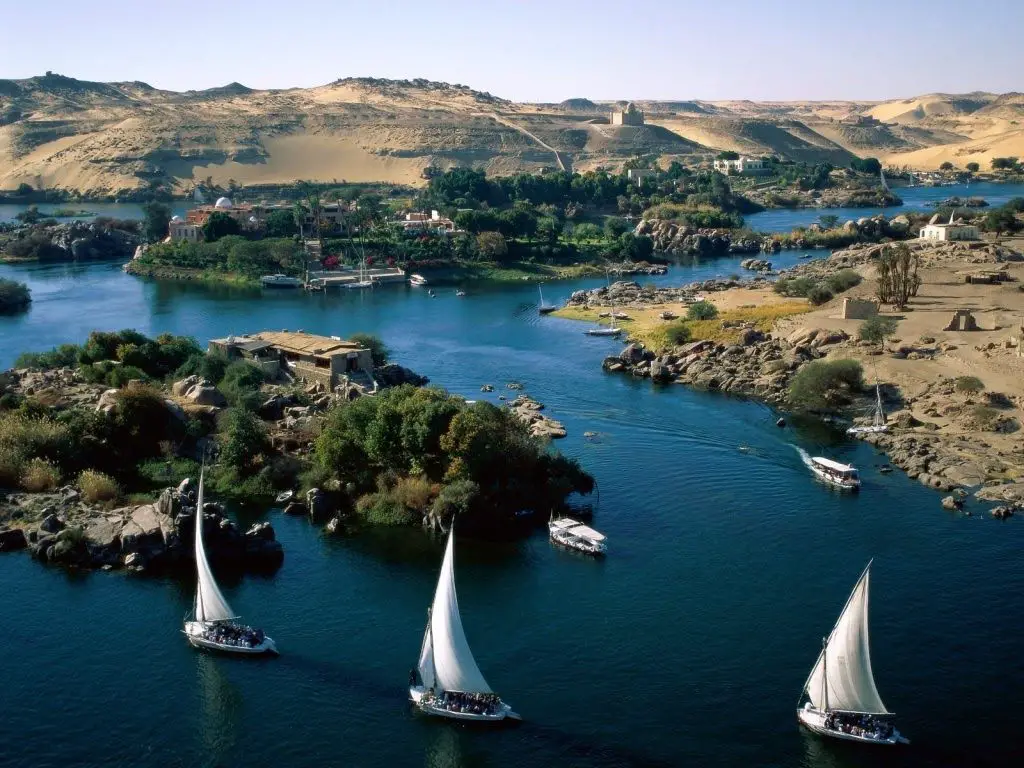
Origin of the name Nile
In the ancient Egyptian language the Nile was called Iteru River, which meant “Great River.” The word Nile comes from the Arabic ‘ni-l which in the Greek language was translated as Neilos meaning “River Valley”.
History and origin of the Nile River
The Nile has been a symbol and living element of great importance for the development of the ancient Egyptian civilization and the current and modern nation. By ancient times most of its cities were settled bordering the river valley and its rich and majestic delta located north of Aswan.
Since the Stone Age, this river has had a fundamental importance for the ancient civilization where thru climatic changes over the centuries and millennia the farmland, also used for hunting and animal production, was transformed and this transformation gave rise to the conformation of the Sahara desert.
These changes happened about eight thousand years BC, which meant that a large part of the population was mobilized and located next to the river where life would be more bearable and would revolve around planting and the pharaohs.
The “Eonile”
In modern times, thanks to satellite studies, it is estimated that the Nile River is the fifth river at least to pass into the Mediterranean from Ethiopian lands. These studies confirm the presence of dry water courses located in the desert west of the river as well as the canyon known as Eonilo who really is the old Nile that is currently filled by a flow of water on the surface. The old Nile or Eonilo was responsible for transporting sediments to the sea. This huge canyon is currently covered by sedimentation.
Location and Countries of the Nile River
Surely you have wondered exactly, where is the Nile River? The Nile River is distributed across ten countries among which are: Rwanda, Sudan, Kenya, Democratic Republic of the Congo, South Sudan, Egypt among others, below you can see the map of the Nile River.
Nile River: Characteristics
The Nile River in Egypt is known as the largest river in Africa, which flows northward and drains into the southeast corner of the Mediterranean Sea, forming what is known as the great Nile Delta, on which the ancient cities of Cairo and Alexandria are found. (See Article: Niger River)
Length
Among the characteristics of the Nile River is worth mentioning that for a long time, even to this day, many believe the Nile River to be the longest in the world. This was until 2007 and 2008 when different measurements concluded that the Amazonian River is in fact the longest, leaving the Nile River in second place with a length of 6 853 kilometers. (See Article: Amazon River)
Rout
The northern section of the river flows almost completely through the desert, between Sudan and Egypt, in an area where civilization for thousands of years has depended on the river for its livelihood. Almost the entire population of Egypt and all its cities are located along the river valley, north of Aswan, and the vast majority of areas of cultural, tourist and historical interest are located along the banks of the Nile.
Nile Basin
The huge river basin of the Nile River in Egypt reaches 3,254,555 square kilometers, about 10% of the surface of the African continent.
Birth and mouth of the Nile River
On its way to the sea, the Nile River has its point of birth in the nations of Uganda and Kenya in what has been known as the White Nile and the part of the river that begins in Ethiopia has been baptized as the Blue Nile.
Both canals join in the city of Khartoum (capital of Sudan) to then travel thru the desert in the direction of Egypt, where crossing the region of Nubia achieves its maximum splendor, is here where the pharaonic world can be found with temples like Abu Simbel, Luxor and the pyramids.
Crossing the big cities like Luxor and Cairo, the mouth of the Nile River will finally arrive at the mythical city of Alexandria where it will mix with the Mediterranean Sea due to its huge delta.
Birth of the Nile
To geographers and hydrographers all around the world the birth of the Nile is a mystery and an enigma because it is unknown to them exactly where this great river is born.
There are those who believe that the birth of the Nile River is in Lake Victoria, one of the largest African lakes with an area that comprises 68,000 square kilometers. This lake has a tributary to the river known as Kagera, it is for this reason that the waters of Lake Victoria begin to separate from the waters of the Nile and that section is known as Nile Victoria.
On the other hand, some people like Burkhart Waldecker claim that the birth of the Nile River is really at the source of the Kagera River. Ptolemy in the second century of the Christian Era already pointed out that the Nile was born from the glaciers of the Rowenzori (small mountain range located in what is now known as the border between Uganda and the Democratic Republic of the Congo) which means that its origins are, even today, an unresolved question.
Tributaries of the Nile River
The Kagera River is the main source being one of the tributaries of the central part of the western shore of the lake, which drains near the city of Bukoba (Tanzania) and is the most remote watercourse in the Mediterranean. It is sometimes considered that the origin of the Nile River is Lake Victoria but this lake is supported by many other rivers of a formidable length and flow.
The sources furthest from the Kagera and at the same time from the Nile River are two:
- The Rukarara river descends gathering tributaries and changes its name several times in the route according to the region; In the first place it bears the name of Mwogo, then the name of Nyabarongo, at the confluence of this with the Akanyaru they give rise to the beginning of the Akagera River and later, upon its confluence with the Ruvubu River, gives rise to the Kagera River, which considered as a source of the Nile and originates near the end of Lake Tanganyika, in the center of the tropical forest of Nyungween Rwanda. This headland of the Kagera has a total length of 6,756 kilometers.
- The southern source of the Nile River that originates in Burundi was the first known and is also the largest and mighty and is furthest from the Mediterranean. It is located approximately 45 km from Lake Tanganyica, at the eastern end of the Burundi Mountains, to the south. This system has a length of 6,671 km a little shorter than the Rwandan side of the river.
White Nile
The river enters Sudan after making its journey through Uganda. Here the river crosses a vast and enormous savanna and where the Nile goes into downpours and when dispersed in a series of canals and branches it is confused with muddy grassland in which papyrus plants and water hyacinths abound.
The river is crossing ten countries, which are:
- Burundi
- Egypt
- Ethiopia.
- Kenya
- Democratic Republic of Congo
- Rwanda
- Sudan
- South Sudan
- Tanzania
- Uganda.
Previously we had shown you the map of the Nile River. The Nile River crosses natural systems and in its passage it encounters abundant vegetation as well as other important rivers that cross vast natural areas rich in fauna and flora. (see link: Putumayo River)
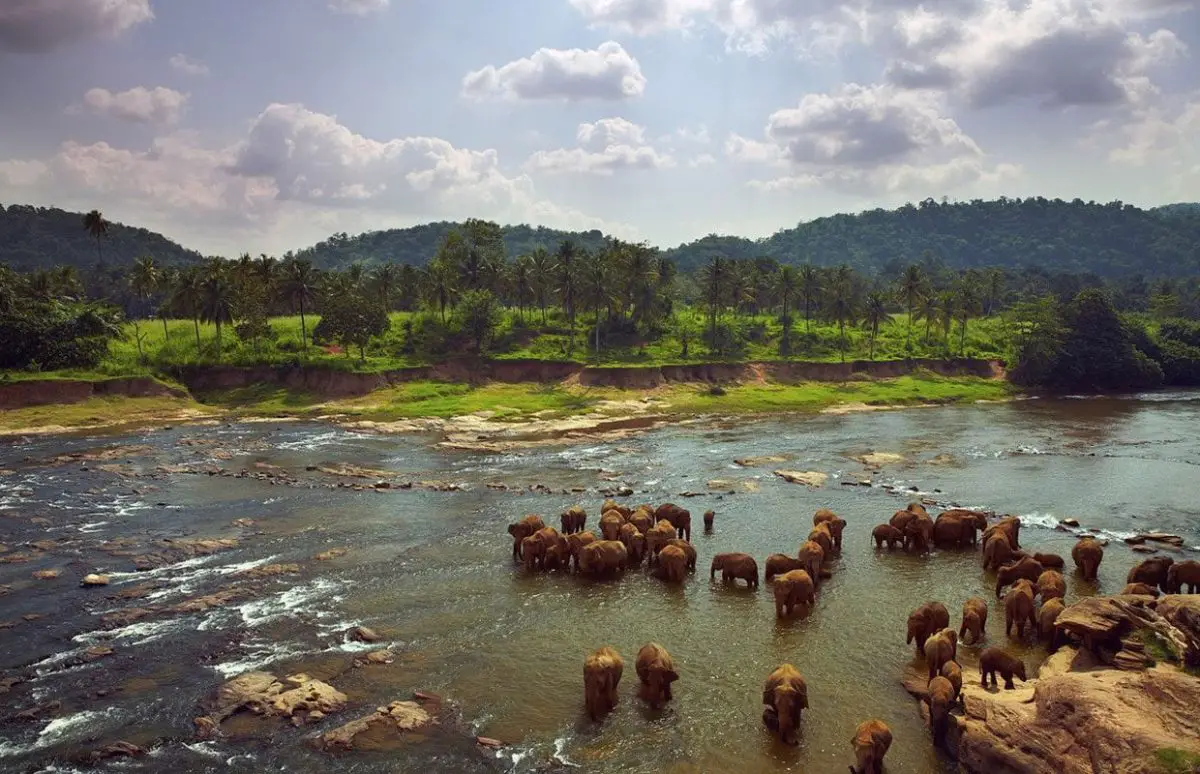
Thus, it is in this place where an immense diversity of animal species comes to life, among which we could find crocodiles, antelopes or hippos and it is also at this point that thanks to the stagnation a large part of the river flow evaporates.
At the height of Malakal and beginning the river to have a delimited course, it begins to flow in a more vigorous way where in the periods of rainfall natural disasters and floods can happen, it is in this region where the Nile is adding to its flow other small rivers (in comparison with the Nile) like the Gacelas River, the one from The Mountains or the Giraffes River and it crosses the arid Savannah of Africa where it ends up arriving at Khartoum where it will be joined with the Blue Nile.
Blue Nile
This long Nile named for the blue color of its waters that contrasts with the somewhat silty color of its brother, the White Nile, is born in Ethiopia and originates specifically from the Abbai River which travels about 1500 kilometers and falls into the Tana lake that is characterized by a multitude of islands where a huge number of monasteries belonging to the Orthodox Christian church take refuge.
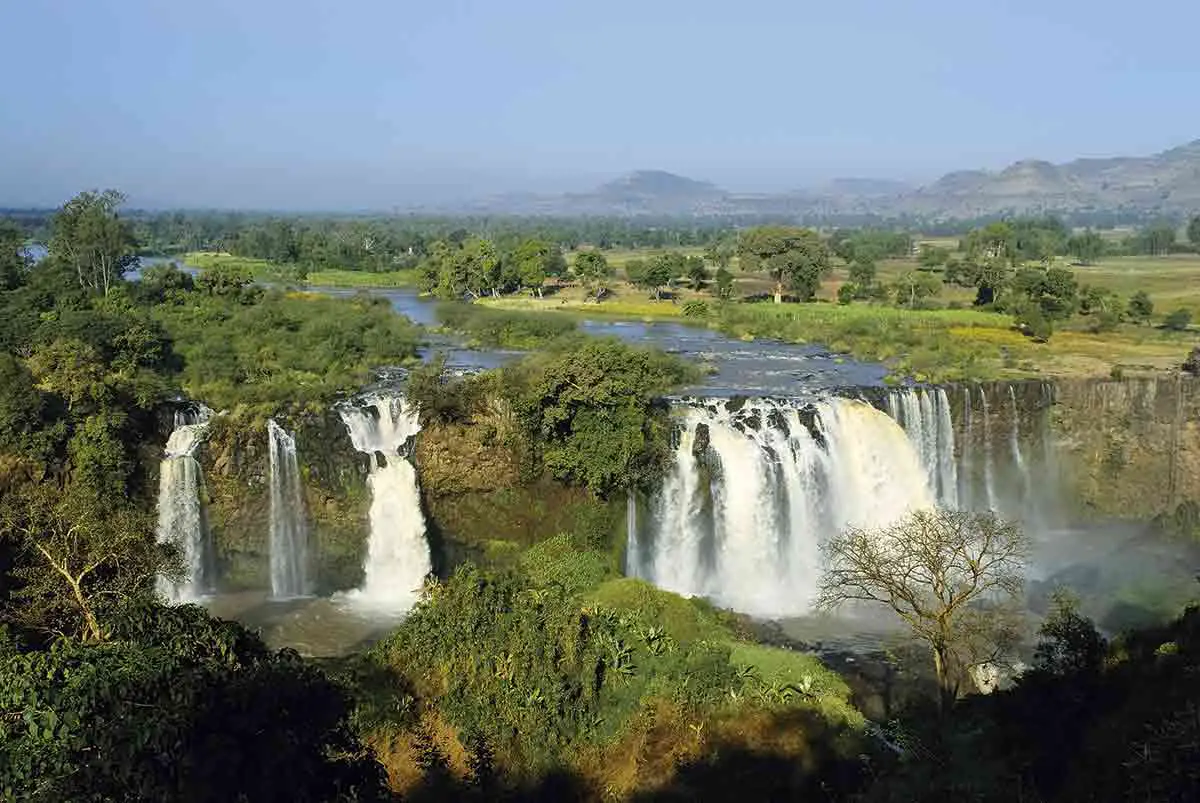
Among picturesque monasteries, painted in biblical scenes of Jesus of Nazareth, of the Virgin Mary and the saints, the Nile’s route goes down Ethiopia heading north on Lake Tana and crosses an exit that will later widen considerably.
The wide canal of this river will continue for about 30 kilometers until it falls from 45 meters high in what is known as the Tississat waterfall and from there it will continue its journey towards the encounter with its other affluent river the White Nile.
Passing through a series of canyons created by the passage of the river through time in the mountains of Goggiam, the Nile begins to enter Sudan passing through Sennar, a vast plain of the region and finally reaches Khartoum where it will find its brother and both will merge to form a single river.
Nile of the Sands (The Middle Nile)
When joining the two previous slopes of the Nile in Khartoum, the river is transformed, at this point of its route, into an impetuous flow due to the forces of both courses joining together, it is here where the Nile begins its pilgrimage through the desert where the vegetation of the riverbanks mixes with the sands thus generating a contrasting and exotic landscape.
After leaving Khartoum, the Nile continues on its way to the north and enters Nubia, a region that reaches Aswan (Egypt) where the river will jump between waterfalls until it crosses a total of five falls before it can reach Lake Nasser and then go through one more waterfall before arriving in Aswan.
It is in Nubia specifically where the river transmits a tranquility and unparalleled beauty thanks to the mixing of the yellow color of the desert meeting the blue color of the river and the green of the palm trees that accompany the riverbank in this section while the flow continues in search of its path to the north.
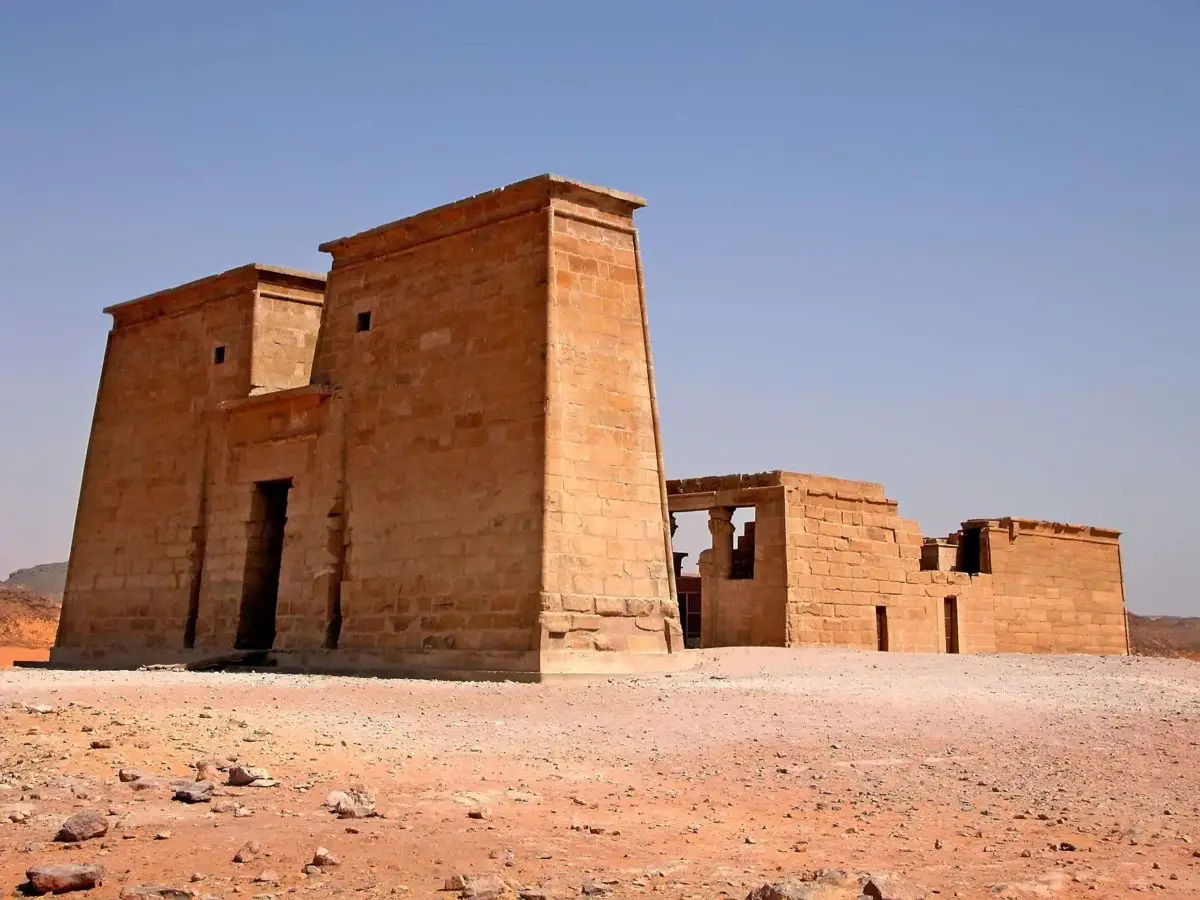
The Nile also passes through the region of El Bayuda where the desert predominates and small corn and tomato crops can be found on the banks of the river, here the passage of time seems to have stopped because you can still see tribes of nomadic people who travel with their flocks looking for water in the wells.
In this area, the pyramids of Meroe, the necropolis of Napata and the great temple to the God Amun, located in Karima, stand out.
Pharaonic Nile (The Lower Nile)
After its way through Uganda, through Ethiopia and Sudan the river reaches Lake Nasser located in Egypt where two dams in the Aswan region retain it. The first of these dams was built in 1902; the second was inaugurated in 1971 reaching 111 meters high.
These dams caused the flooding of a vast territory of great importance as far as archaeological remains are concerned, in Nubian Egypt a significant amount of ancient buildings were dismantled and moved to higher ground where they could be safe from the effects of the rising waters.
Here in the next video you can discover some important archaeological remains of Nubia
In this part of the river’s path, silence and tranquility reflect the peace and calm of the waters that contrast its blue color with the golden color of the sands that reach the river’s edge; here travelers cool off with the waters from natural springs and offer something to drink to their camels.
The history of the Nile River can be trace to small ships that carried twelve people, known as falúas traveling in the direction of the small islands of “Ibu” that means elephant. This is where the ivory trade took place in ancient times. This island was the southern border in the time of the pharaohs and the island is known for its archaeological treasures.
Near Aswan are the remains of the temple of Abu Simbel and other archeological remains that were rescued from the flood caused by the building of the dams. File is the name of this archaeological site that was also a place of worship for the Egyptian gods in pharaonic times. Here it was believed that from this place flowed the Nile, specifically from the cave of the god Hapi known as the river god.
This was for a long time the most fertile region of the Nile, it was in Aswan where the annual flooding of the river began between the months of May and June, where the water level grew with great speed until the middle of September and it was in October when it began its descent and, in the next period, reach its lowest level.
It was from the Blue Nile that most of the floodwaters came from due to the rainfall that took place in the Ethiopian mountains and that transported the slime that fertilized the lands; it is for this reason that the rain was expected and venerated every year because they guaranteed the harvest which was a cause for celebrations.
Leaving Aswan, the Nile River continues its journey to the Edfu region where the temple dedicated to the God Horus is located and then continues to another land of pharaohs, Luxor, there you can see at the foot of the Nile River the Temple of Karnak in Luxor which is one of the most impressive monuments of the land of the pharaohs in Egypt.
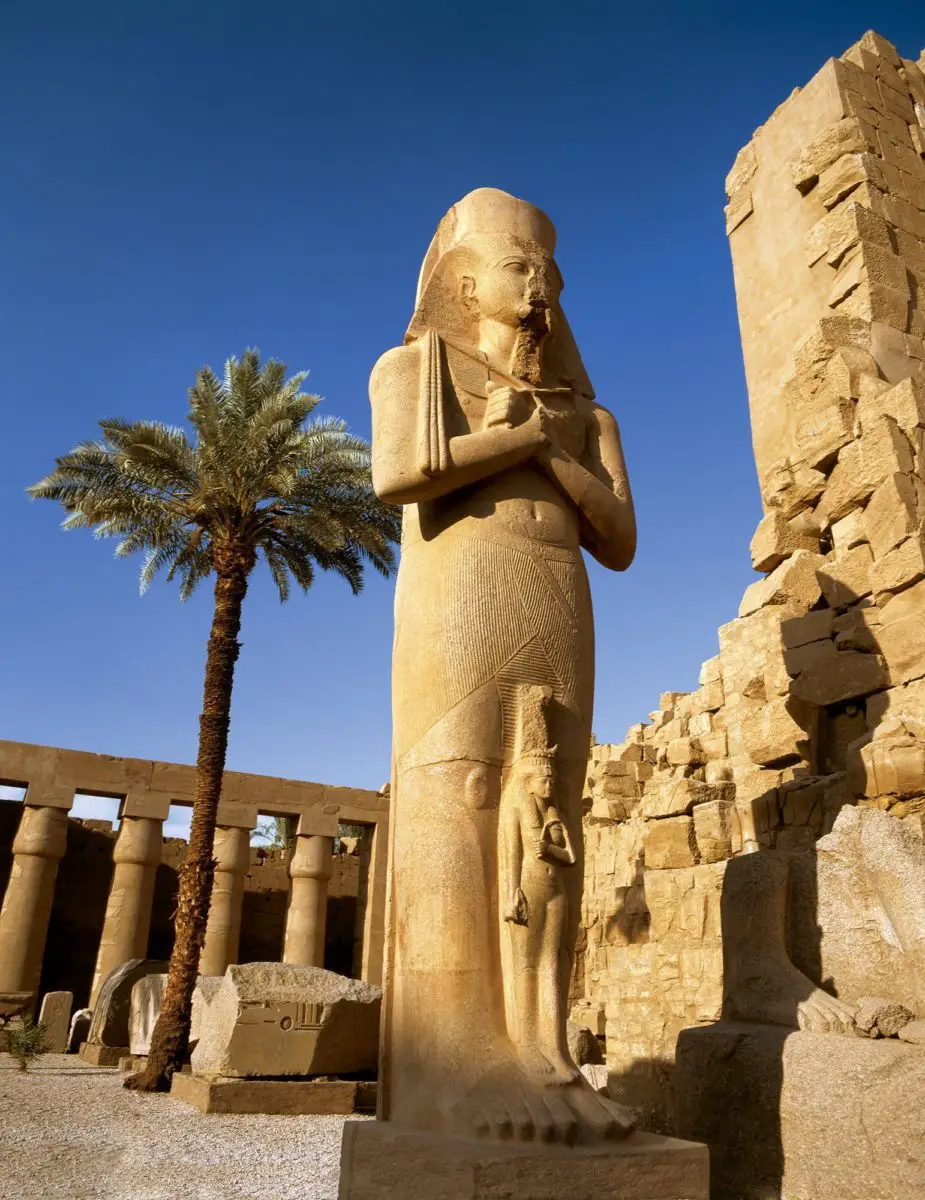
From this point the Nile River extends until it reaches the border with Libya. Here in ancient times there was a giant savanna with an exuberant animal life and it is thought that this is the site where the Egyptian civilization originated and that the passage of time turned it into the “sea of sand” as many call it today.
The Nile River continues its course until it reaches Kharga where in the sixth century BC a temple was built honoring Hibis, this temple still stands.
Continuing on the path of the Nile River the oases of Dakhla and Farafra can be found; here the colorful huts fill the place known as “The Valley of the Golden Mummies”. This name was given because in this place archeological excavations have found no less than ten thousand mommies and sarcophagi.
It is at this point that the Nile, with a very slow movement, enters Cairo, still showing its wide flow. (Another river with a fairly wide flow in the world that you should know is the Arauca River in Venezuela)
Nile River Delta
What is the Nile River? This is the most powerful river in Africa which flows north and ends at the southeast end of the Mediterranean Sea, then forming the great Nile Delta.
The length of the Delta is about 160 kilometers and from east to west it has approximately 240 kilometers on the coast. This region is extremely rich and of unparalleled fertility compared to the rest of Egypt thanks to the branching of the river in the different arms that end up in the Mediterranean Sea. It is estimated that since the time of the first dynasty in Egypt the Delta has considerably increased its size by about 3000 square kilometers.
The Nile River Delta is among the most famous deltas next to the Amazonian River’s delta and among many others such as the Orinoco River and the river deltas of other African rivers such as the Niger River. (See link Niger River )
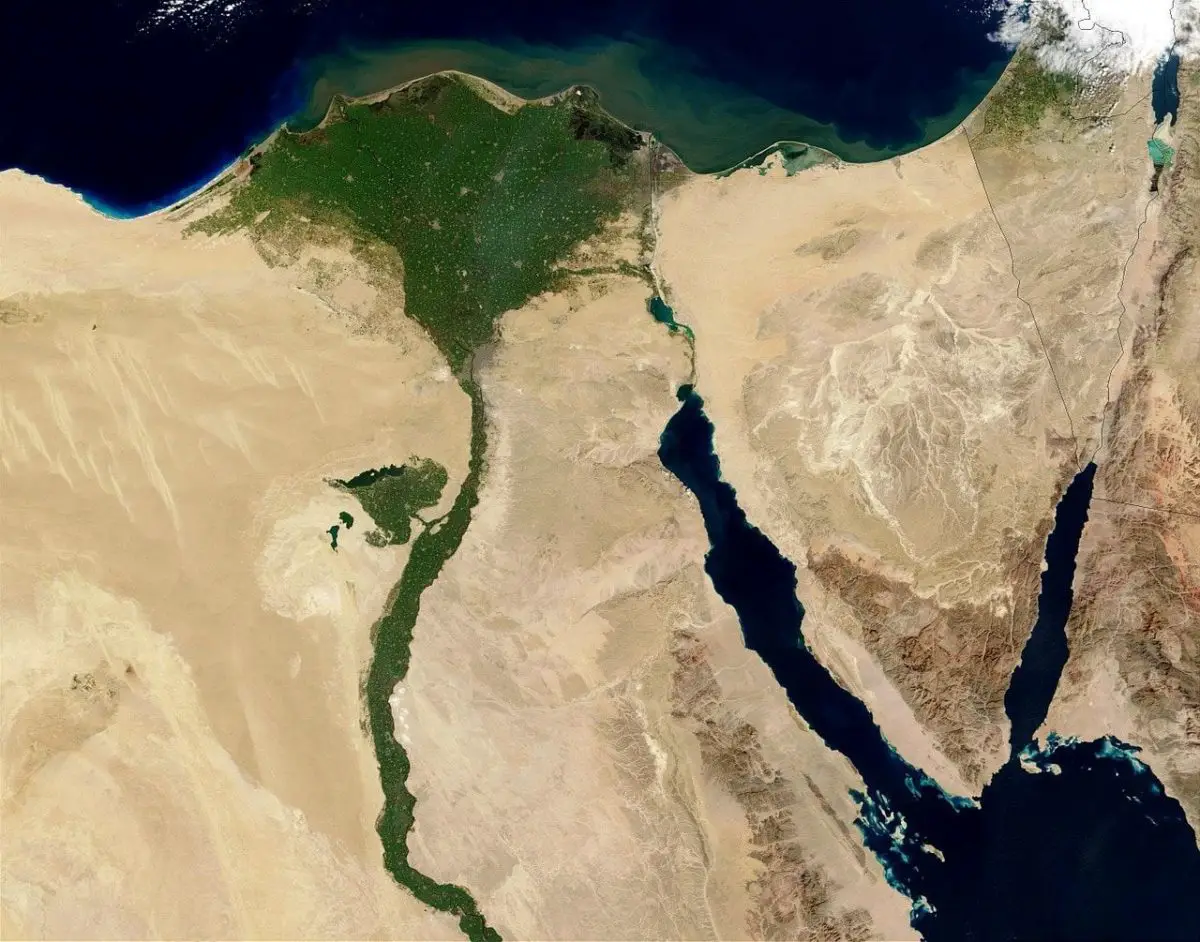
Nowadays Cairo is a city of about 15 million people where the ancient meets the modern, due to this expansion, many of the historical sites such as pyramids and monuments are being devoured by population growth, new buildings and by the urban environment of modern times.
The Nile River remains as a very important part of the city and its constant growth, but its sound has been silence by the engines and the noise of the boats and people who travel the city. It is in this silent way that the Nile River crosses the city until it reaches the delta, named for having the exact form of the letter “delta” of the Greek alphabet, where it begins to branch into several canals until it enters the Mediterranean and merges with this sea.
It is on this last trip to the sea that the Nile River is divided into two main ramifications; Damietta to the east and Rosetta to the west, passing the latter through the mythical city of Alexandria, where Egyptian and Greek cultures intermingle thanks to history of the construction of the city. Nowadays this monumental city is the second largest of all Egypt when it comes to population density, here the ancient and modern make and interesting mix.
Nile River Fauna
As already mentioned, one of the most important characteristics of the Nile River is that, until 2007 and 2008, there was the certainty that the Nile River was the longest in the world. It is this fact which makes it easy to understand that when we have to talk about the animal life of the Nile we have to be prepared to find a rich variety of species that, despite being a generally desert area, have adapted over the millennia to this environment. Not all rivers have a vast animal presence in them or in their banks, usually thanks to pollution.
In this area we find an abundant fauna that sadly includes a variety of endangered species thanks to come of the specific characteristics of the Nile River, which have turned them into precious resources which has allowed their endangerment. (see link Río paraná contaminated).
Among the fauna that surrounds the Nile River are a large number of mammals of considerable size that, like all the animal species that inhabit here, has as a vital resource the water that provides them with the possibility of sustainability in this mostly dry region. Elephants and Giraffes are the first to enjoy the benefits of the river, without leaving behind the Hippos or medium-sized predators such as leopards.
Crocodiles of the Nile River
Known as one of the three species of crocodiles that inhabit Africa, the Niloticus cocodrylus is the second largest crocodile species in the world as it can reach six meters long and be around 800 kilograms in weight.
As the name implies, this species of crocodile inhabits the waters of the Nile but is not exclusive to this region because it can also be found in freshwater lakes or in rivers of the Island of Madagascar or Sub-Saharan Africa.
In ancient Egypt this species had a very particular connotation and was feared by the Egyptian civilization, in fact, these animals were even worshiped by the locals as they were considered children of a crocodile god known as Sobek who was associated with fertility and protection.
The city where this god was worshiped was located in Shedet in the oasis known as El Fayum, a place well known to the Greeks and named crocodilopolis. In the city of Kom Ombo was located the other temple of worship for this god.
In this video you can see the crocodiles that inhabit the river, its large size and its peculiar way of living in the Nile River.
Some of the animals that serve as pray for the river crocodiles are buffaloes, gazelles and ocapis that also gather to drink water around the river. Many of these species live in specific areas around the river where the live, eat and enjoy the benefits of the river waters. The river then turns from a blessing from a place where they must be aware of predators such as the crocodiles and where they must move cautiously because the river they use to drink is the place this reptile hunter uses to find its next meal.
Nile River Flora
We now know where the Nile River is born, which is the African countries of Uganda and Kenya. The Nile riverbank is one of the vastest expansions of grass on its land. The hashab is one of the endemic trees of the Nile. This is a small spine tree used as food and praised for its coagulant properties, action against diarrhea and bronchitis, among other properties.
We can also find in the vicinity of the river the acacias of the Sahel savannah, this acacia is a spiny tree that reaches up to 14 meters high with an extremely strong trunk that can reach a diameter of one meter.
Nile River Pollution
Several entities responsible for regulating the industrial activity of the region have found that many of these establishments violate water treatment standards and dispose of their sewage water directly in the river, thus turning one of the most mythical and majestic rivers of the world as the Nile in a sewage canal in many of its sections which ultimately turns it into a totally polluted downstream.
Even though the Egyptian Government stepped in and announced a multi-million dollar plan to recover the river and create awareness in relation to the dangers of pollution, these results have not yet been seen and the river contamination continues to progress.
Nile Falls
We know that the origin of the Nile River is Lake Victoria, whose lake is located on the border of Zimbabwe and Zambia, which constitute a waterfall of the Zambeze River. In this video you can see the flow of the Nile River falls.

